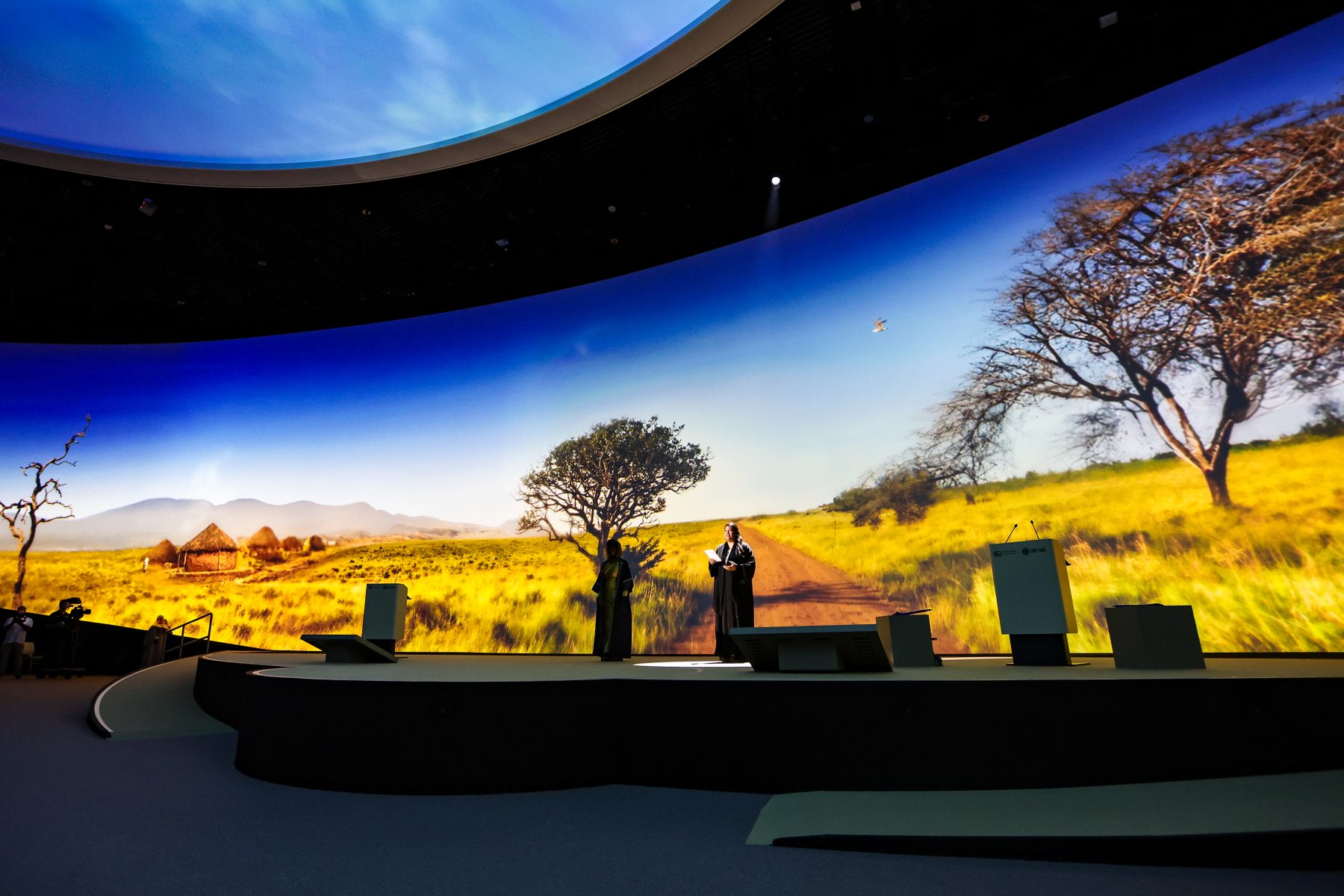How to measure your event’s carbon footprint

We all have a responsibility to take immediate action to reduce the amount of greenhouse gas emissions produced by events. One important aspect of this is measuring your event’s carbon footprint and environmental impact.
This is crucial not only for our planet, but also for business performance, as isla predicts that destinations with high-performing environmental wellbeing will become increasingly attractive for event buyers looking to manage risks and reputation.
The good news is that it’s entirely possible to create memorable event experiences with minimal environmental impact. Delve into the key metrics for assessing the sustainability of events to reduce your event’s impact and ace your sustainability reporting.
Why measure the environmental impact of an event?
An estimated average of 2t CO2e is emitted at each UK event, with approximately 2.14kg of waste produced per attendee (isla, Temperature Check Report 2022/2023)
Reaching net zero by 2050 is now legislated in many countries around the world, so it’s not a question of if, but how to reduce event emissions. That being said, the benefits of measuring and reporting on sustainability are plentiful, resulting in better sight of how to reduce your impact, potential cost savings and improved brand reputation.
There are many business benefits to delivering more sustainable events and having the right metrics in place can help to guide your decision-making throughout the event planning process.
Assessing environmental sustainability metrics for events
It’s important to choose the right metrics and KPIs to measure key aspects of environmental sustainability at your event. Follow these steps to ensure you’re ticking all the boxes and reporting on real and relevant data.
Defining goals
“When setting sustainability goals, you need to think about how you’re going to get there, how you’re going to measure it and who is responsible” – Faye Priestley, Sustainability Director, Identity.
The first step is to set clear, measurable sustainability goals for your event that are aligned with your business objectives. SMART goals that are specific, measurable, achievable, relevant and timely help to ensure that objectives are manageable and will help to enhance performance.
For example, one of our environmental goals is to reduce carbon emissions from waste by 50% by 2030.
Setting sustainability KPIs
Next, select relevant KPIs that align with your sustainability goals.
For example, we track the total emissions created in our business operations and event deliveries. We use absolute and intensity metrics to measure our progress and allow for our growing business.
Defining responsibilities
It’s important to clearly outline responsibilities for tracking and collecting data at events so that nothing is missed.
According to our Sustainability Director, Faye, sustainability should be woven into every management plan. Sharing targets in a transparent way holds everyone accountable.
Set a baseline for carbon emissions
Baseline assessments are a record of the anticipated greenhouse gases that will be produced during an event and are the reference point against which emissions reductions can be measured. This establishes a starting point for comparison at the beginning of a project and helps inform decisions and track improvements during the delivery cycle.
Collecting event data
Gather data from various sources, including vendors, venues and suppliers as well as on-site observations. You can use measurement tools such as TRACE by isla, as well as surveys, invoices and utility bills to collect quantitative and qualitative information.
Engaging stakeholders and suppliers
Engage with stakeholders, including attendees, vendors and local communities to gather feedback on sustainability initiatives and identify areas for improvement.
Analysing the data
After the event has taken place and all data has been collected it’s time to assess the data, compare the results against your baseline assessment and evaluate the success of the environmental sustainability initiatives.
Sustainability reporting
Transparent reporting on your sustainability efforts is key for both brand reputation and wider stakeholder buy-in. Most businesses will need to report annually on their sustainability initiatives, and we can help contribute to that report through event data.
Using specialist emissions tracking tools for the events industry, we can help you create comprehensive impact reports that highlight key findings, achievements and areas for improvement.
Planning for future events
Once you have the data, insights and learnings in place, they can be used to reduce the environmental impact of your future events, helping to continuously improve your sustainability efforts.
Key sustainability metrics for measuring event impact
When it comes to measuring environmental impact, there are four key areas to consider:
- Energy
- Waste
- Transport
- Product materials
It’s not always possible to track all of the emissions from all elements of an event as sometimes these are out of your control or the remit of your event organiser or agency. However, here are some of the different emissions sources to consider…
Carbon footprint
Carbon measurement should be compliant with the Greenhouse Gas Protocol which means emissions need to be reported as Scope 1, 2 or 3.
Energy consumption
Identify key areas of energy use, such as lighting, equipment and venue utilities. This should include the venue’s gas and electricity use. Implement monitoring systems to track energy consumption during the event. This can be collected from electricity bills or litres of fuel used from generators.
Waste management
Track different waste streams and estimate generation rates to plan waste management infrastructure. This information can be gleaned from waste contractors or through waste composition audits. It’s critical to work closely with your supply chain to understand the onward journey of products/waste post-event to keep suppliers honest and accountable.
Water usage
Identify key areas of water usage, such as catering, sanitation and landscaping. You may want to think about water-saving technologies and campaigns such as low-flush toilets or reusable water bottles.
Transport and travel
Track all key contributors to emissions, such as attendee travel and event logistics through surveys or AI tools. This should include attendee, staff, courier and freight transportation to create a full picture. Use the data to see how you can encourage the use of public transport and greener transport options.
Materials
According to isla’s first-ever UK event industry carbon report, production materials are the second largest impact area after audience travel.
Think about event materials at all stages of the event, such as transportation, production and disposal. Do you need to build bespoke or use raw materials? Design to standard sizes, using hired stock where possible. Implement tracking systems to monitor the life cycle emissions of materials, collecting data on their environmental impact.
Catering
Measure food waste during the event to develop strategies to minimise overproduction, opt for plated food over buffet, encourage responsible portion sizes and facilitate food donations or composting for any surplus.
Going further along the supply chain, you can measure the distance travelled by the food from its origin to the event location. Choose locally sourced, seasonal ingredients. This helps quantify the emissions associated with transportation.
You can also assess the environmental impact of packaging and utensils used by caterers. Opt for caterers that use compostable or recyclable event materials and eliminate single-use plastics.
Did you know – 55% of all meals recorded by isla’s TRACE platform were meat-free, showing a trend for plant-based catering. This can reduce emissions by up to 97% per meal, making this one of the simplest and most effective actions to take to reduce emissions.
Online and hybrid elements
While online events help to reduce emissions created by attendee travel, they still have an environmental impact.
Assess the environmental impact of attendee activities during virtual events such as streaming sessions, downloading materials and participating in virtual networking.
You can also examine the energy usage and emissions associated with the digital infrastructure supporting the event, including servers, internet service providers and other event technology components.
Impact measurement tools, frameworks and resources
We use a carbon and waste measurement tool called TRACE by isla, which is aligned with global standards for environmental reporting. TRACE allows us to collate data into one central location from teams and supply chains, to see progress in data and reports. It works in real-time which means we can estimate the impact of the events we deliver and make important decisions to improve environmental performance at every stage of the process.
Discover more helpful resources…
- The United Nations Sustainable Development Goals outline the different aspects of creating a more sustainable planet for all
- Commit to the SBTi with Ambitious corporate climate action – Science Based Targets
- TRACE is a carbon measurement platform for events by isla
Case studies
Worlds Better is a niche sustainability consultancy specialising in the live event industry. They’ve been supporting us to achieve our sustainability goals both for our own business and our clients. This includes calculating our carbon emissions and supporting our reporting process.
They helped us to onboard a new carbon and waste impact measurement platform to measure the impact of our operational emissions as well 7 large events delivered in 2023.
“Working with Worlds Better to better understand our data has helped provide structure, insights and focus by creating a clear roadmap to achieving our environmental ambitions. Chrissie Beck, in particular, has been instrumental in building the framework which will help inform our environmental behaviours towards a net zero future.” – Faye Priestley.

Implementing sustainable practices at your next event
“The events industry can’t fix it alone – we need to think about how we can all make small changes to contribute to the bigger impact” – Faye Priestley, Sustainability Director, Identity
By focusing on key sustainability metrics and adopting best practices, your events can make a positive impact on the planet while leaving a lasting impression on attendees.
We’re a sustainable events agency that’s here to help you track, analyse and report on sustainability performance at your next event.
By harnessing data-driven insights, tracking carbon emissions with specialist tools and keeping up to date with sustainability standards, we can help you achieve your long term sustainability goals whilst mesmerising attendees at human-centred events.
Embrace sustainability and let your events shine in the global landscape.
There’s more than one way to measure event sustainability. Stay tuned for our guidance on how to increase the social impact of events…
Author acknowledgements
This blog was produced in collaboration with Faye Priestley, Sustainability Director at Identity. Faye has a long career working in events with a special expertise in sustainability. She is a Power 50 Green Champion and an Advisory Board Member at isla – a non-profit organisation founded by event professionals and industry leaders focusing on a sustainable future for events.







